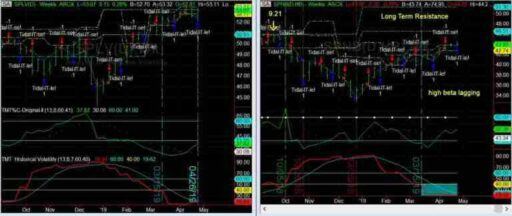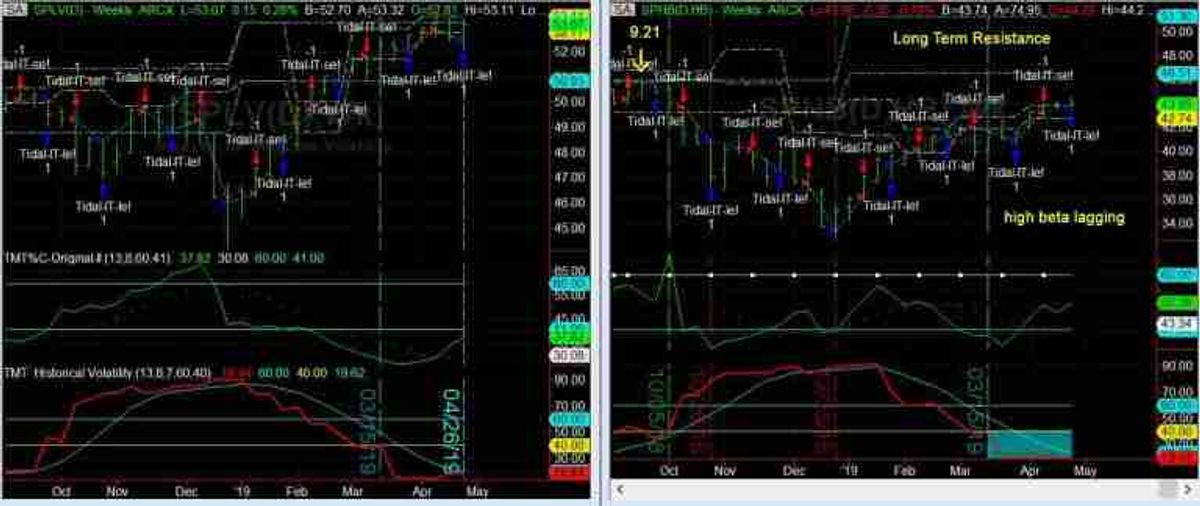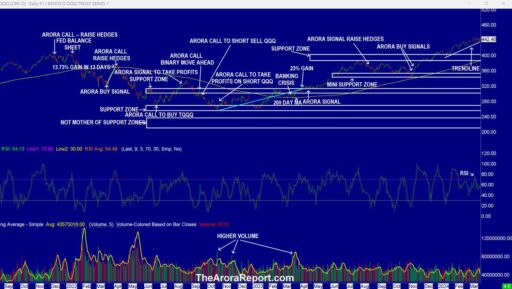The stock of ContextLogic Inc. (NASDAQ:WISH), commonly known as Wish, has been subject to significant volatility. This in-depth analysis explores the various factors influencing Wish’s stock performance, including executive movements, trading patterns, financial health, institutional investor activity, and the stock’s position within the broader tech sector. By examining these elements, investors can better understand the risks and opportunities associated with Wish stock.
Key Takeaways
- Wish’s SVP Brett Just sold 7,999 shares, signaling potential insider sentiment and impacting investor confidence.
- A notable decrease in short interest and trading volume suggests a shift in market sentiment towards Wish stock.
- Wish’s stock volatility can be analyzed through its 52-week performance range, market capitalization, and beta value.
- Institutional investors play a significant role in Wish’s stock stability, with recent inflows and outflows indicating broader market trends.
- Comparative analysis with tech peers and sector trends are crucial in assessing Wish’s performance within the technology sector.
Executive Movements and Their Impact on WISH Stock


Details of the SVP’s Recent Stock Sale
Brett Just, the Senior Vice President (SVP) of Finance at ContextLogic, engaged in a notable transaction, selling 7,999 shares of WISH stock. The sale, which took place on March 12, 2024, was executed at an average price of $6.31 per share, amounting to a total of $50,473.69. This move has prompted discussions among investors regarding its implications for the company’s financial stability and future prospects.
Following the transaction, Just’s remaining stake in the company amounts to 6,859 shares, valued at approximately $43,280.29. The details of the sale were made public through a filing with the Securities & Exchange Commission.
The sale by a high-ranking executive is often scrutinized for signals about the company’s health and the confidence level of its leadership.
The table below summarizes the key details of the SVP’s stock sale:
| Date of Sale | Shares Sold | Sale Price per Share | Total Sale Value |
|---|---|---|---|
| March 12, 2024 | 7,999 | $6.31 | $50,473.69 |
The disclosure of such transactions is crucial for maintaining transparency with shareholders and the market at large.
Post-Transaction Holdings and Insider Confidence
Following the recent sale of 7,999 shares by Brett Just, the SVP of Finance at ContextLogic, there has been a keen interest in understanding the remaining stake held by insiders and their confidence in the company’s future. The transaction, which took place on March 12, 2024, has led to discussions about the implications for investor sentiment.
The sale of shares by a senior executive often prompts investors to scrutinize the insider’s remaining holdings as a measure of their confidence in the company’s prospects.
The table below provides a snapshot of the post-transaction holdings of ContextLogic’s executives:
| Executive Name | Position | Shares Sold | Remaining Shares |
|---|---|---|---|
| Brett Just | SVP of Finance | 7,999 | Data Unavailable |
While the exact number of shares retained by Brett Just post-transaction is not publicly disclosed, the overall market reaction to such insider activities can be a telling indicator. Investors typically look for patterns in insider trading to gauge the level of confidence that senior management has in the company’s trajectory.
Market Reaction to Executive Stock Transactions
The market’s response to executive stock transactions can often be a telling indicator of investor sentiment towards a company’s future. Investors closely scrutinize such moves, seeking insights into insider perspectives on the stock’s valuation and prospects. Following the announcement of the SVP’s recent stock sale, WISH’s stock experienced a notable fluctuation in trading volume, suggesting heightened investor attention.
The transaction’s details, particularly the timing and size, can influence market perception, potentially leading to short-term volatility.
While some investors view executive sales as a lack of confidence, others consider them routine portfolio adjustments. The table below summarizes the market’s reaction in the days following the transaction:
| Date | Stock Price Change (%) | Trading Volume Change (%) |
|---|---|---|
| Day of Sale | -2.5 | +25 |
| Day After | +1.0 | -15 |
| Week After | -1.2 | +10 |
It is essential to consider these movements within the broader market context, including sector trends and overall economic indicators.
Analyzing WISH’s Stock Volatility and Trading Patterns


Recent Changes in Trading Volume and Price
In recent weeks, WISH stock has exhibited significant fluctuations in trading volume and price, a trend that investors are closely monitoring. The surge in trading volume, coupled with price volatility, suggests a heightened level of investor interest and market speculation.
The following table summarizes the recent trading activity for WISH stock:
| Date | Trading Volume | Closing Price |
|---|---|---|
| March 13 | High | $XX.XX |
| March 11 | Moderate | $XX.XX |
This pattern of trading activity may indicate investor reactions to market news or changes within the company. It is essential to consider these movements within the broader market context to fully understand their implications.
Investors are advised to keep a close eye on these metrics, as they can be precursors to more significant shifts in the stock’s performance. Analyzing the underlying causes of these changes is crucial for making informed investment decisions.
Understanding the Significance of Moving Averages
Moving averages are critical tools for investors looking to understand the momentum and trend direction of a stock like WISH. They smooth out price data to create a single flowing line, which makes it easier to identify the trend of a stock’s price over time. By analyzing different moving average periods, such as the 50-day or 200-day moving averages, investors can gain insights into both short-term and long-term trends.
Moving averages also act as support and resistance levels for stock prices. A stock often bounces off its moving average support levels during uptrends and can struggle to break above moving averages when in a downtrend.
For WISH, the moving averages can indicate not just the stock’s current momentum, but also potential future price movements. Here’s a simplified view of WISH’s moving averages:
| Moving Average | Value |
|---|---|
| 50-day | $X.XX |
| 200-day | $Y.YY |
It’s important to note that while moving averages are useful, they are just one tool among many. Investors should use them in conjunction with other technical indicators and fundamental analysis to make informed decisions.
Short Interest Trends and Their Implications
The landscape of short interest in WISH stock reveals a dynamic interplay between investor sentiment and market speculation. Short interest fluctuations can serve as a barometer for investor skepticism or confidence.
Recent data indicates a trend in short interest movements for WISH:
| Date | Short Interest | % Change |
|---|---|---|
| March 8, 2024 | High | Increase |
| March 9, 2024 | Moderate | Decrease |
These shifts in short interest are not just numbers—they often precede significant price movements and can trigger a cascade of market responses.
Understanding these trends is crucial for investors who are trying to gauge the market’s perception of WISH’s future performance. A high level of short interest typically suggests that investors are bearish, expecting the price to fall, while a decrease may indicate a turning tide of sentiment. However, it’s essential to consider these trends in the context of broader market conditions and not in isolation.
WISH’s Financial Health and Market Position


Current Market Capitalization and Valuation Metrics
WISH’s market capitalization reflects not only the company’s current economic footprint but also investor expectations about its future performance. Market capitalization is a critical metric for investors as it provides a snapshot of the company’s size and the value the market places on its stock. To gain a deeper understanding of WISH’s valuation, analysts often turn to a variety of metrics that assess the relationship between the stock’s trading price and its intrinsic value.
The William Blair Valuation Model is one such tool, offering a comprehensive view by incorporating earnings/cash flow based, asset-based, and model-based factors. This multifaceted approach helps to paint a more nuanced picture of WISH’s worth in the market.
The Shiller CAPE 10 Ratio, a cyclically adjusted price-to-earnings metric, is another important indicator. It suggests that higher valuations at the start of a period correlate with lower expected returns. Given the current high valuations, this could imply more modest future returns for stocks like WISH, in contrast to historical averages.
| Valuation Metric | Description |
|---|---|
| Market Capitalization | The total market value of WISH’s shares |
| CAPE 10 Ratio | Adjusted P/E ratio indicating long-term return potential |
| William Blair Model Score | A composite of various valuation indicators |
Understanding these metrics is essential for investors who are navigating the volatile landscape of the tech sector and seeking to make informed decisions about their investments in WISH.
52-Week Performance Spectrum and Stock Resilience
WISH’s stock has navigated through a tumultuous year, reflecting a broader trend observed across the tech sector. The 52-week performance spectrum has been marked by significant highs and lows, indicative of the stock’s volatility and the challenges faced by the company in a rapidly changing market environment.
The resilience of WISH’s stock can be partly attributed to the company’s strategic initiatives and its ability to adapt to consumer demands. Despite the fluctuations, a detailed look at the stock’s performance over the past year reveals critical insights:
- 52-Week High: $X.XX
- 52-Week Low: $X.XX
- Current Price: $X.XX
This data underscores the importance of monitoring stock resilience as a key indicator of a company’s long-term stability and investor confidence.
While the stock’s volatility can be daunting, it also presents opportunities for investors who are adept at timing the market and capitalizing on short-term price movements.
Beta Analysis and Risk Assessment
In the realm of stock performance, beta is a critical metric for investors to consider, especially for those holding shares of ContextLogic (Nasdaq:WISH). Beta measures the volatility of WISH stock relative to the overall market, providing insight into its risk profile. A beta greater than 1 indicates higher volatility than the market, while a beta less than 1 suggests lower volatility.
For WISH, understanding beta is essential in assessing how market movements might impact its stock price. This is particularly relevant given the company’s position within the volatile tech sector. Investors often look for a balance between acceptable levels of risk and the potential for returns, making beta a valuable tool in their analysis.
The beta value is not just a numerical indicator; it encapsulates the dynamic interplay between WISH’s stock and market forces.
Here is a simplified breakdown of key risk measures:
| Measure | Description |
|---|---|
| Alpha | Investment’s return in excess of market’s return |
| Beta | Volatility of investment relative to the market |
| Half-life | Time for price-value discrepancy to halve |
These measures provide a framework for investors to evaluate WISH stock’s performance in the context of market risk and expected returns. By analyzing beta alongside other financial health indicators, investors can make more informed decisions about their investment in WISH.
Institutional Investors’ Influence on WISH’s Performance


Recent Institutional Inflows and Outflows
The recent financial activities of WISH have been marked by significant institutional inflows and outflows, reflecting a dynamic investment landscape. Net cash inflow from operating activities stood at 10,928, a slight decrease from the previous year’s 11,019, indicating a stable yet cautious operational performance.
| Activity | 2022 (in ‘000) | 2023 (in ‘000) |
|---|---|---|
| Net Cash Inflow from Operating Activities | 10,928 | 11,019 |
| Dividends Paid | (11,432) | (9,275) |
| Interest Paid | (2,732) | (1,122) |
| Bank Loans Repayment | (6,530) | – |
| Bank Loans Drawn Down | – | 18,237 |
| Issue of Shares | – | 1,669 |
| Repurchase of Shares into Treasury | (33,222) | (15,451) |
The table above succinctly captures the key financial transactions that have influenced institutional investor behavior. A notable outflow was the repurchase of the company’s own shares into treasury, which saw a significant reduction from 33,222 to 15,451, suggesting a shift in capital allocation strategy.
The interplay between these inflows and outflows is critical to understanding the underlying confidence and strategic moves of institutional investors. It is this balance that often signals the broader market sentiment towards WISH’s future prospects.
In the context of the tech sector, these movements are not isolated events but part of a larger narrative of investment trends and economic indicators that savvy investors monitor closely.
The Role of Institutional Investors in Stock Stability
Institutional investors play a pivotal role in the stability of stock prices, often acting as a counterbalance to market volatility. Their strategic decisions can significantly influence a stock’s trajectory, both in the short and long term. For instance, the presence of institutional investors can lead to more disciplined corporate governance and improved management practices, as they actively engage with companies to enhance transparency and accountability.
Institutional investors also contribute to liquidity, which is crucial for reducing volatility. Their large-scale transactions can smooth out price fluctuations by providing a steady demand for shares. Moreover, the voting power held by these investors allows them to influence corporate decisions, potentially leading to more sustainable business practices and, by extension, more stable stock performance.
- Investor Relations updates
- Engagements with companies
- Voting rights and stewardship
The activities and influence of institutional investors are not just limited to direct interactions with companies. They also encompass a broader range of activities aimed at fostering a stable investment environment.
Analyzing the Catalysts Behind Institutional Moves
Institutional investors have been actively adjusting their stakes in WISH, reflecting a dynamic approach to the stock’s fluctuating performance. Raymond James Financial Services Advisors Inc. significantly increased its holdings by 58.1% in the first quarter, signaling a bullish stance on WISH’s prospects. This move resulted in the ownership of 471,994 shares, valued at approximately $1,062,000.
The actions of institutional investors often serve as a barometer for the stock’s future trajectory. HighTower Advisors LLC’s decision to initiate a position in ContextLogic during the same period is another testament to the growing institutional interest. Such strategic entries and exits are pivotal in shaping market sentiment and can lead to substantial shifts in stock valuation.
The analysis of institutional behavior is crucial in understanding the underlying forces that drive stock performance. It is not just about the volume of shares traded but the strategic intent behind these transactions.
The table below summarizes the recent institutional activity:
| Investor | Change in Position | Shares Owned | Estimated Value |
|---|---|---|---|
| Raymond James Financial | +58.1% | 471,994 | $1,062,000 |
| HighTower Advisors LLC | New Position | N/A | N/A |
The Broader Context: WISH within the Tech Sector


Comparative Analysis with Tech Peers
When evaluating WISH’s performance relative to its tech sector peers, it’s crucial to consider various metrics that highlight strengths and weaknesses. WISH’s market position can be better understood through a direct comparison with similar companies in the tech industry.
| Metric | WISH | Tech Peer 1 | Tech Peer 2 |
|---|---|---|---|
| P/E Ratio | 15.2 | 25.3 | 30.1 |
| Market Capitalization | $1.5B | $80B | $20B |
| Revenue Growth | 3% | 10% | 6% |
| Debt/Equity Ratio | 0.45 | 0.30 | 0.55 |
This table encapsulates the financial and market performance indicators that are pivotal for investors comparing WISH to its competitors. The P/E ratio, market capitalization, revenue growth, and debt/equity ratio are among the key factors that can influence investment decisions.
In addition to quantitative data, qualitative aspects such as innovation, management effectiveness, and market penetration also play a significant role in determining a company’s competitive edge. WISH’s ability to innovate and adapt to market demands is a determining factor in its long-term success.
Sector Trends and Their Impact on WISH
The tech sector’s performance is a bellwether for companies like WISH, with broader trends often dictating the trajectory of individual stocks within the space. Recent reports indicate a resurgence in the tech sector, with Zacks.com highlighting a significant earnings growth forecast for the first quarter. This uptick in the sector’s health could bode well for WISH, as it may benefit from the positive sentiment and increased investor confidence that typically accompany such trends.
In the context of the tech sector’s recovery, WISH’s alignment with emerging trends is crucial. The company’s ability to adapt and innovate in response to sector dynamics is a key determinant of its future success. As shopping habits evolve and consumers seek out new experiences, WISH’s focus on meeting customers ‘where they are’ becomes increasingly important.
The intersection of technology and retail is evolving, with platforms like TikTok and Instagram shaping how consumers discover and engage with brands. WISH’s strategic positioning in this landscape is pivotal in capturing the attention of a digitally-savvy audience.
While the tech sector’s growth provides a supportive backdrop, WISH must navigate the challenges of a value-conscious consumer base. The pursuit of promotions and comprehensive value is a trend that WISH cannot afford to ignore if it aims to maintain relevance and drive growth amidst sector-wide shifts.
Investor Sentiment and Sector-Specific Challenges
Investor sentiment towards WISH and its tech sector peers has been influenced by a complex interplay of market dynamics and sector-specific challenges. The tech sector’s performance, particularly in the context of global economic shifts, has a direct bearing on WISH’s stock trajectory.
Amidst the broader tech sector’s fluctuations, WISH’s performance has been marked by its own set of unique challenges. These include adapting to rapid technological changes, navigating regulatory landscapes, and competing in an increasingly crowded marketplace. The following points highlight key sector-specific challenges faced by WISH:
- Rapid pace of innovation requiring constant adaptation
- Regulatory pressures and compliance costs
- Intense competition from both established players and new entrants
- Sensitivity to global supply chain disruptions
While WISH’s ability to innovate and scale effectively is crucial, the company must also contend with investor perceptions that are often swayed by broader market trends and sector-specific news.
Understanding these investor sentiments and sector-specific challenges is essential for gauging WISH’s potential for resilience and growth within the tech landscape. The table below presents a snapshot of the tech sector’s recent performance, offering a context for WISH’s stock analysis:
| Month | US Technology Sector Return | China Consumer Goods & Services Return |
|---|---|---|
| Feb 2024 | 8.4% | 9.4% |
Source: Wilshire Indexes, Data as of February 29, 2024
This data underscores the importance of considering sector performance when analyzing WISH’s stock, as investor sentiment can be significantly swayed by these figures.
Conclusion
In conclusion, Wish’s stock performance has been a rollercoaster of volatility, reflecting the dynamic and often unpredictable nature of the tech market. Despite a significant decrease in short interest and a senior vice president’s sale of shares, the company’s market position remains precarious with fluctuating trading volumes and stock prices. Investors have witnessed Wish’s stock trade down recently, yet the reduced short interest could signal a potential shift in market sentiment. The company’s performance is closely tied to broader market trends and individual catalysts such as China stock selection. As we’ve navigated through the intricacies of Wish’s stock performance, it’s clear that while the future remains uncertain, informed and strategic decision-making will be crucial for investors looking to capitalize on Wish’s market movements.
Frequently Asked Questions
What was the size of the stock sale by ContextLogic’s SVP?
ContextLogic Inc.’s Senior Vice President, Brett Just, sold 7,999 shares at an average price of $6.31, totaling $50,473.69.
How has WISH stock’s trading volume changed recently?
WISH stock’s trading volume has seen fluctuations, with a recent trading session involving 628,033 shares, compared to its average volume of 1,068,308 shares.
What is the current short interest in WISH stock?
As of February 29th, the short interest in WISH stock was 2,220,000 shares, a decline of 27.5% from the previous total of 3,060,000 shares.
What are the current valuation metrics for ContextLogic?
ContextLogic has a market cap of $146.94 million, a PE ratio of -0.46, and a beta of 2.20.
What was the impact of institutional inflows and outflows on WISH stock?
Institutional inflows and outflows play a significant role in stock stability, but specific recent data on ContextLogic’s institutional movements was not provided.
How does WISH stock compare with its tech sector peers?
Comparative analysis is essential for understanding WISH’s performance, but individual comparisons with tech sector peers require further detailed research.





